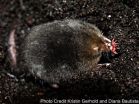(Press-News.org) Cancer arises from the accumulation of mutations and structural changes in chromosomes, which in some cases give rise to combinations that favour the growth or expansion of the disease. In this context, chromosomes tend to lose or duplicate entire regions, although, the mechanisms that initiate these chromosomal abnormalities are not fully understood.
A study published this week in the journal Cell, in which researchers from the Spanish National Cancer Research Centre (CNIO) participated, demonstrates a new mechanism that explains how these changes originate in the chromosomes of tumour cells.
The work, led by André Nussenzweig's group at the National Cancer Institute (NCI, USA), with the participation of CNIO researcher Óscar Fernández‐Capetillo, shows that collisions between the machinery responsible for duplicating the DNA and for transferring this genomic information to the RNA for protein synthesis—a phenomenon known as transcription—are the cause of a very high proportion of the chromosomal alterations found in tumours.
Until now, it was believed that the majority of these problems originated in areas of the genome that were difficult to duplicate and which, therefore, required the completion of the entire S phase of the cell cycle; a stage in which cells duplicate their DNA. Due to this episode, these regions were especially exposed to breaks or aberrations.
The current study reveals that other areas of the genome also exist—those that replicate quickly early in S phase—that are prone to breakages. In particular, the researchers demonstrate that this occurs when these DNA regions that replicate, have surrounding genes that are being actively copied to RNA.
"In these cases, the collision between the two machineries, the duplication machine and the transcription machine, can be responsible for generating chromosomal alterations that are deadly for cells," says Fernández‐Capetillo.
This study moves us a step closer to understanding the mechanisms that explain the chromosomal alterations in tumour cells most common in tumours. "This new mechanism can even explain up to 50% of the abnormalities associated with some types of leukaemia," says Fernández‐Capetillo.
Furthermore, this work defines a new class of genomic fragile sites that might contribute to our understanding of the changes that took place in the genome throughout evolution.
###
Reference article:
Identification of Early Replicating Fragile Sites that Contribute to Genome Instability. Cell (2013). doi: 10.1016/j.cell.2013.01.006 END
A new mechanism that contributes to the evolution of cancer
This study, which involves the participation of CNIO researcher Oscar Fernandez-Capetillo, demonstrates the existence of new fragile genomic sites responsible for chromosomal alterations in tumors
2013-01-31
ELSE PRESS RELEASES FROM THIS DATE:
New Geology study raises questions about long-held theories of human evolution
2013-01-31
What came first: the bipedal human ancestor or the grassland encroaching on the forest?
A new analysis of the past 12 million years' of vegetation change in the cradle of humanity is challenging long-held beliefs about the world in which our ancestors took shape – and, by extension, the impact it had on them.
The research combines sediment core studies of the waxy molecules from plant leaves with pollen analysis, yielding data of unprecedented scope and detail on what types of vegetation dominated the landscape surrounding the African Rift Valley (including present-day ...
Joslin scientists find first human iPSC from patients with maturity onset diabetes of the young
2013-01-31
BOSTON – January 31, 2013 – Joslin scientists report the first generation of human induced pluripotent stem cells from patients with an uncommon form of diabetes, maturity onset diabetes of the young (MODY). These cells offer a powerful resource for studying the role of genetic factors in the development of MODY and testing potential treatments. The findings appear in the Journal of Biological Chemistry.
Human induced pluripotent stem cells (hiPSCs) are adult cells that have been genetically reprogrammed to exhibit the characteristics of embryonic stem cells, including ...
Personalized medicine eliminates need for drug in 2 children
2013-01-31
This press release is available in French.Using genome-wide analysis, investigators at the Sainte-Justine University Hospital Research Center and the University of Montreal have potentially eliminated a lifetime drug prescription that two children with a previously unknown type of adrenal insufficiency had been receiving for 14 years. Over a lifespan, the adjustment in treatment represents an approximate saving of $10,000 in drug and test costs per patient. Moreover, the less invasive treatment regime can potentially reduce the lifetime risk of hypertension in the patients. ...
Nanomaterials key to developing stronger artificial hearts
2013-01-31
On January 30, 2013 ACS Nano published a study by Ali Khademhosseini, PhD, MASc, Brigham and Women's Hospital Division of Biomedical Engineering, detailing the creation of innovative cardiac patches that utilize nanotechnology to enhance the conductivity of materials to induce cardiac tissue formation. Creation of these ultra-thin cardiac patches put medicine a step closer to durable, high-functioning artificial tissues that could be used to repair damaged hearts and other organs.
The cardiac tissue patches utilize a hydrogel scaffolding reinforced by nanomaterials called ...
Pediatric orthopaedic surgeons show age-related patterns of spine injury in ATV injuries
2013-01-31
Memphis, Tenn. – Children continue to account for a disproportionate percentage of morbidity and mortality from ATV-related accidents – up 240 percent since 1997, according to a Journal of Pediatric Orthopaedics report published by pediatric orthopaedic surgeons at Le Bonheur Children's Hospital.
The surgeons – who studied data from the Kids' Inpatient Database – found spine-related injuries from all-terrain vehicles (ATVs) in the United States are more common in older children and in females, unlike males in most trauma studies. ATV-related spine injuries in children ...
Researcher uncovers potential cause, biomarker for autism and proposes study to investigate theory
2013-01-31
NEW YORK, NY — A New York-based physician-researcher from Touro College of Osteopathic Medicine, best known for his research into fertility and twinning, has uncovered a potential connection between autism and a specific growth protein that could eventually be used as a way to predict an infant's propensity to later develop the disease. The protein, called insulin-like growth factor (IGF), is especially involved in the normal growth and development of babies' brain cells. Based on findings of prior published studies, Touro researcher Gary Steinman, MD, PhD, proposes that ...
Working alone won't get you good grades
2013-01-31
Students who work together and interact online are more likely to be successful in their college classes, according to a study published Jan. 30 in the journal Nature Scientific Reports and co-authored by Manuel Cebrian, a computer scientist at the Jacobs School of Engineering at the University of California San Diego.
Cebrian and colleagues analyzed 80,000 interactions between 290 students in a collaborative learning environment for college courses. The major finding was that a higher number of online interactions was usually an indicator of a higher score in the class. ...
Adding new members to group increases distrust among older members, impacts coordination
2013-01-31
Adding a new member to a working group can create distrust between members and hinder group functions, but a new study suggests that the distrust created is between older group members rather than about the newcomers- especially when previous group performance with just the older group members is poor. The results are part of a study published January 30 in the open access journal PLOS ONE by Matthew McCarter and Roman Sheremeta from Chapman University (U.S).
Previous studies report that changing members in an existing group hurts group performance, but the underlying ...
Leading by the nose: Star-nosed mole reveals how mammals perceive touch, pain
2013-01-31
The most sensitive patch of mammalian skin known to us isn't human but on the star-shaped tip of the star-nosed mole's snout. Researchers studying this organ have found that the star has a higher proportion of touch-sensitive nerve endings than pain receptors, according to a study published January 30 in the open access journal PLOS ONE by Diana Bautista and colleagues from the University of California, Berkeley and Vanderbilt University.
Touch and pain are closely intertwined sensations, but very little is known about how these sensations are detected in our cells. In ...
Chimp see, chimp learn: First evidence for chimps improving tool use techniques by watching others
2013-01-31
VIDEO:
This video shows the "dipping " technique performed by chimpanzee Ayumu. Note that he uses his mouth to insert the tube into the bottle. In form, his technique is identical to...
Click here for more information.
Chimps can learn more efficient ways to use a tool by watching what others do, according to research published January 30 in the open access journal PLOS ONE by Shinya Yamamoto and colleagues from Kyoto University and Kent University, UK. Their study ...
LAST 30 PRESS RELEASES:
Empress cicada wings help illuminate molecular structure
Using sound waves to detect helium
Time burden in patients with metastatic breast and ovarian cancer from clinic and home demands
Researchers discover bias in AI models that analyze pathology samples
Scientists ID potential way to prevent brain injuries from triggering Alzheimer's
MASTER 2nd Open Call: Execution period kick-off
Algae for health in food and pharma
Advanced microrobots driven by acoustic and magnetic fields for biomedical applications
Chicago health information leader recognized for raising CPR readiness and blood pressure awareness
The Intimate Animal, a new book from Kinsey Institute Executive Director Dr. Justin Garcia
When blue-collar workers lose union protection, they try self-employment
New video dataset to advance AI for health care
MEA-based graph deviation network for early autism syndrome signatures in human forebrain organoids
New modeling approach sheds light on rare gut disease
Study documents potentially hazardous flame retardants in firefighter gear
Can certain bacteria regulate aging of the immune system and its related alterations?
AI model helps diagnose often undetected heart disease from simple EKG
There are fewer online trolls than people think
Cell membrane fluctuations produce electricity
Jeonbuk National University study shows positive parenting can protect adolescents against self-harm
Surface-engineered ZnO nanocrystals to tackle perfluoroalkyl substance contamination
This new understanding of T cell receptors may improve cancer immunotherapies
A new fossil face sheds light on early migrations of ancient human ancestor
A new immunotherapy approach could work for many types of cancer
A new way to diagnose deadly lung infections and save lives
40 percent of MRI signals do not correspond to actual brain activity
How brain-inspired algorithms could drive down AI energy costs
Gum disease may be linked to plaque buildup in arteries, higher risk of major CVD events
Contrails are a major driver of aviation’s climate impact
Structure of dopamine-releasing neurons relates to the type of circuits they form for smell-processing
[Press-News.org] A new mechanism that contributes to the evolution of cancerThis study, which involves the participation of CNIO researcher Oscar Fernandez-Capetillo, demonstrates the existence of new fragile genomic sites responsible for chromosomal alterations in tumors


